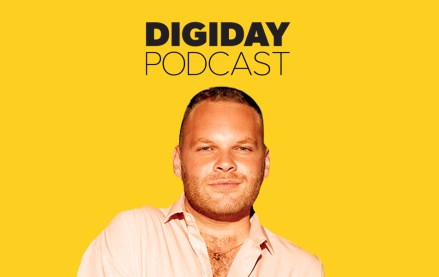Connect with execs from The New York Times, TIME, Dotdash Meredith and many more

Nicholas Greco, senior vice president, U.S. sales, Channel Factory
The digital advertising industry is increasingly scrutinizing media wastage, and recent numbers highlight the extent of the issue.
Next&Co’s annual Digital Media Wastage report revealed that $5.6 billion of digital ad spend was wasted in 2022. This represents 41% of overall digital ad spend. For connected TV specifically, LG Ads found that brands often allocate 50% of their campaign budget to reach just 10% of the total available audience. And in light of the current economic uncertainty, it is even more apparent that media wastage must be addressed, and each dollar should be invested smarter and go further.
Addressing the media wastage issue with swift and decisive action has the potential to save the advertising industry billions of dollars per year.
Reaching audiences effectively with tailored creative
According to video advertising research from Channel Factory, conducted with Magna Media, ads placed alongside ‘misaligned content’ led to a decreased purchase intent. On the contrary, advertising content placed alongside ‘aligned content’ saw purchase intent increase by 8%. This demonstrates that aligning advertising with the right content is essential and delivers a greater return on investment.
Using the highest standard of brand suitability and contextual targeting technologies, brands and advertisers can rest assured that their purchased impressions align with the most suitable content. Each dollar will provide the greatest number of good impressions with brand suitability and contextual targeting.
Brands must also understand that niche is the new mass. Campaigns are delivering tailor-made creativity to smaller, niche audiences through brand suitability, contextual targeting and inclusion lists. Audiences engage more positively with advertising content that reflects themselves, while a scatter-gun approach only leads to media wastage.
Targeting diverse and inclusive audiences reduces media wastage
An age of cautious advertising has led to brands and advertisers shying away from important topics like race, gender and religion through the use of block lists. These lists also mean that creators addressing these issues, predominantly from diverse communities, are blocked. As a result, this advertising content is not reaching diverse audiences.
The importance of diverse audiences cannot be overstated, and for too long, overly cautious block lists have cut off these potential audiences from engaging with brands’ content. Brands with a higher diversity score in their advertising show an 83% higher consumer preference, illustrating the power of diverse audiences in delivering more significant returns.
Creating bespoke and thoroughly researched inclusion lists allow brands and advertisers to support diverse creators and audiences. Channel Factory research found that 60% of consumers prefer to associate themselves with companies that actively show they are committed to creating an inclusive online experience for all. Funding diverse audiences through inclusion lists is not only the right thing to do by reinforcing the messages and goals brands have for inclusion and diversity, but it also delivers financially by reducing media wastage.
Authentic and conscious messaging aligns with consumer preferences
Brands should take a more conscious approach to advertising and engage audiences authentically in order to reduce media wastage.
Underrepresentation in video advertising content has been a significant issue for the advertising industry, although great strides have been made in this area in recent years. However, media wastage is not just underrepresentation; it goes much deeper. It’s now time for brands and advertisers to develop diverse and conscious strategies in every element and process, from campaign building and ideation to targeting and brand suitability methodologies.
To ensure this, brands must develop campaigns that reflect their values and their audiences’ shared values before investing in technologies and advertising partners that can deliver socially conscious contextual targeting and align content with diverse audiences. These technologies and partners should also be able to deliver brand suitability and targeting across multiple languages, not just English; otherwise, brands will not be aligned with diverse creators and audiences across the globe.
These considerations add deeds to the critical social messages that brands are putting out with the benefit of maximizing the ROI of campaigns.
Advertisers must align with social causes and clearly demonstrate their actions in their respective areas. With 69% of consumers preferring to buy from brands committed to socially conscious causes, it becomes apparent that being a conscious brand and advertiser drastically reduces media waste.
Media wastage is an industry-wide problem and a big one, but it can be addressed through a re-evaluation of advertising practices. One essential step is ensuring a brand’s content is aligned with the correct audiences through high-standard brand suitability and contextual advertising. Brands and advertisers should no longer be hamstrung by the age of cautious advertising and instead introduce far more rewarding inclusion lists. Taking a conscious, holistic approach to advertising is essential to reducing media wastage and creating a more positive advertising ecosystem for all.
Sponsored by Channel Factory
More from Digiday

In Graphic Detail: Inside the state of the creator economy industrial complex
The creator economy might have started out as an alternative to traditional media, but is becoming more and more like it as it professionalizes.

Ad Tech Briefing: How ad tech underpins the fate of Madison Avenue’s ‘Wedding of the Year’
The ‘brand safety’ debate is threatening to derail the IPG-Omnicom merger, while questions are raised on the integration of Annalect and Acxiom.

‘Embrace your chaos’: How creator Brandon Edelman is trying to plan for the future
While creators are now key to marketing budgets, their longevity in the fast-paced digital world is a pressing concern. This episode explores how TikToker Brandon Edelman is navigating that challenge, building a sustainable career by diversifying his content and focusing on brand partnerships.








